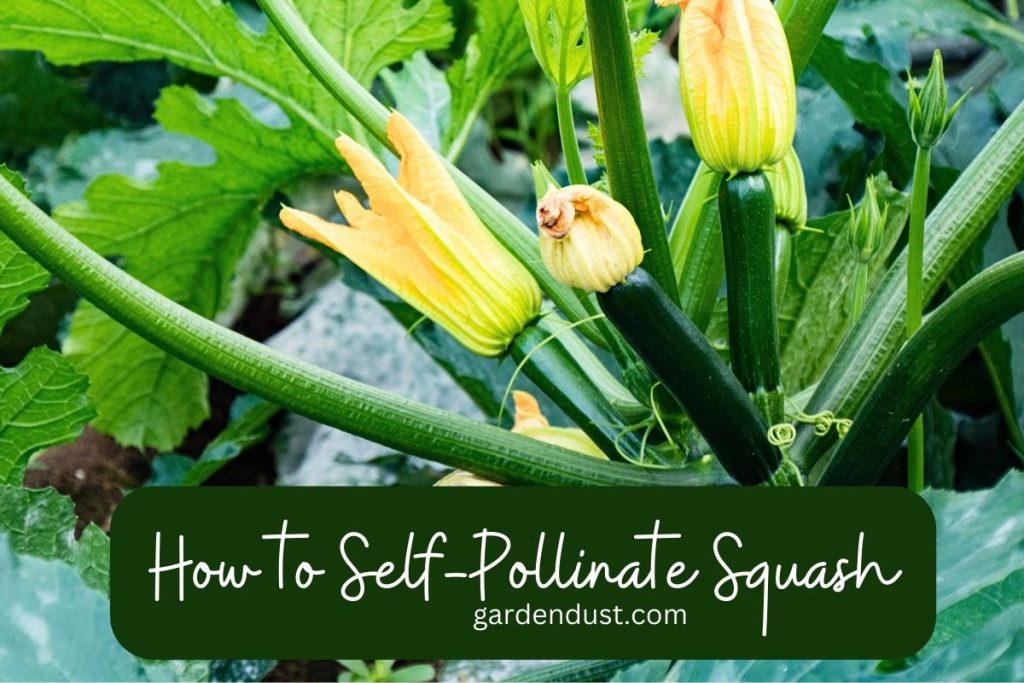Squash plants are beloved additions to any vegetable garden, offering an array of delicious fruits and vibrant foliage. However, some squash varieties face challenges with pollination, especially in urban or indoor settings where pollinators may be scarce. Self-pollination is a practical and effective method to ensure a bountiful harvest, and it’s a skill every gardener should have in their repertoire. In this article, we will guide you through the process how to self-pollinating squash, empowering you to take control of your garden’s success.
A Step-by-Step Guide
Understanding the Importance of Pollination:
Before delving into the self-pollination process, it’s essential to understand the significance of pollination in squash plants. Squash is categorized as a monoecious plant, meaning it has separate male and female flowers on the same plant. For successful fruit production, pollen must travel from the male flower to the female flower. Inadequate pollination can result in poor fruit development and low yields.
Identifying Male and Female Flowers:
To self-pollinate squash, it’s crucial to differentiate between male and female flowers. Male flowers have a slender stem while female flowers feature a small, swollen ovary at the base of the flower. Male flowers often appear first, followed by the female flowers a few days later.
Timing is Key:
Timing is vital for self-pollination. Wait until the female flowers are fully open and receptive to pollen. The petals should be wide open, exposing the stigma, which is the female reproductive organ.
Preparing for Pollination:
To ensure a successful pollination process, gather some basic tools: a small paintbrush or cotton swab, and access to both male and female flowers. If you have multiple squash plants, ensure they are of the same species to maintain the genetic integrity of the fruit.
Collecting Pollen:
During the early morning, when the male flowers are most likely to be open, gently pick a male flower from the plant. Hold the flower steady and remove the petals to expose the stamen, which contains the pollen-producing anthers. Gently tap the stamen with your brush or cotton swab to collect the pollen.
Pollinating the Female Flowers:
Now that you have collected the pollen, locate a fully opened female flower. Take the brush or cotton swab with the collected pollen and gently brush it against the stigma inside the female flower. The pollen should adhere to the stigma, kick-starting the pollination process. Alternatively, you can rub the stamen directly on the stigma of the female flower.
Also Read- Ants On Cucumbers: Causes & Prevention
Ensuring Adequate Pollination:
To increase the likelihood of successful pollination, repeat the process with multiple female flowers using the same pollen source. This cross-pollination within the same plant can lead to more significant yields and healthier fruit development.
Protecting the Pollinated Flowers:
After successful pollination, it’s essential to protect the pollinated flowers from external factors that may hinder fruit development. Some gardeners choose to use small bags or mesh to cover the pollinated flowers, preventing unwanted cross-pollination from insects or other plants.
Monitoring and Caring for Squash:
Once the self-pollination process is complete, keep a close eye on your squash plants. Adequate watering, proper fertilization, and pest management are vital for healthy fruit development. As the fruits mature, you can remove the protective coverings you placed on the pollinated flowers.
Self-pollinating squash is a valuable skill that allows gardeners to take control of their vegetable garden’s success. Understanding the pollination process and mastering the art of self-pollination can lead to higher yields, healthier fruit development, and a more satisfying gardening experience overall. By following the step-by-step guide provided in this article, you can ensure a bountiful harvest of delicious squash from your own garden. Happy Gardening….







